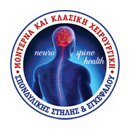Epidural nerve stimulator
Epidural nerve stimulation is the most modern treatment method of chronic and incurable neuropathic pain caused by a range of benign diseases. The definition of chronic pain is pain that lasts over 3 months and the definition of neuropathic pain is pain caused by any neurological damage whether it is by a traumatic injury (nerve injuries and incisions, e.g., phantom limb pain) or by an inflammation (aseptic neuritis) or by a post-inflammation condition (e.g., post-herpetic neuralgia).
Epidural nerve stimulation (or Spinal Cord Stimulation) is a modern and minimally invasive technique of the Functional Neurosurgery and Neuromodulation. It was first performed in 1967 by the neurosurgeon Norman Shealy.
Indications
The indications of an epidural nerve stimulator implant are the following:
a) Chronic sciatica
b) Chronic nerve root pain in an upper limb
c) Complex regional pain syndrome or reflex sympathetic dystrophy
d) Arachnoiditis
e) Multiple sclerosis (MS)
f) Bone marrow injury
g) Failed back surgery syndrome (FBSS)
Technique
The placement of the epidural nerve stimulator is a relatively simple surgical operation. One tile or two cylinder electrodes are placed outside the outer casing of the bone marrow (epidural) and on top of the posterior surface of the bone marrow either percutaneously or through a very small incision in the middle of the back. The electrode expansions are implanted under the skin up to the abdomen where the nerve impulse transmitter and its battery are implanted through a second incision.
Prior the permanent implant, a test placement of the electrodes is run for a few days in order to ensure the benefit and the effectiveness of this method on a certain patient. The correct connection of the circuit and the correct settings of the device result in the transmission of nerve impulses to the posterior horns of the gray matter and the nerve impulse modulation at the pain sensory fibers’ incoming point (gate control theory) is achieved. Therefore, the patient feels light numbness in the suffering area instead of the intense pain they used to feel.
Complications
A thorough understanding of the nerve transmitter to be used as well as the right surgical technique eliminate the complications of this method (e.g., hematoma, contamination, material migration, not normal function of the nerve transmitter, nerve injury, etc.). Preventive antibiotics reduce the percentage of contamination as well as the possibility of the nerve stimulator removal because of an infection. For the aforementioned reasons, the implant should always be performed by a specialized neurosurgeon.






